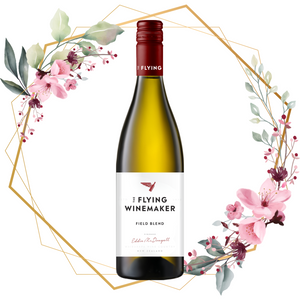The 2020 Flying Winemaker Field Blend White – the first edition of this label – is possibly “the most ambitious winemaking project” to date within the portfolio, says the team. A white wine from New Zealand’s Wairarapa region based on three grapes – Sauvignon Blanc, Pinot Gris and Riesling – it is rich and textural, with stone fruit characters and a backbone of minerality.
This is a wine which tells the story of the vintage, rather than winemaking philosophy and style. For yields of each varietal will vary from year to year, as will growing season patterns, and thus ripeness levels. The vineyard can thus be seen to take on a life of its own – and there are interesting theories around how vines bearing different varietals interact with each other, creating nuance. This sense of authenticity may be one reason why we are seeing increasing numbers of field blend wines on the market: they talk of low-intervention winemaking; they talk of legacy, heritage and tradition.
A field blend wine is one made not from blocks of a vineyard planted with a single varietal, but from a vineyard where different varieties of grapes grow together, quite possibly randomly and of different colours. Such multi-varietal vineyards have a very long history. In the past, growing a range of grapes was seen to mitigate against weather disruptions, disease and even pests, with the belief that at least some varietals, or parts of the vineyard, would produce a crop. Today, viticulturalists tend to want to know exactly what they are harvesting, with a particular focus on picking at optimal ripeness, so multi-varietal vineyards began to fall out of favour. This means, though, that those that do remain tend to be planted with old, low-yielding vines with the potential to deliver concentration of flavours and aromas.
Field blend vineyards are associated with France’s Alsace region, and with Spain, but the area most closely aligned with field blends is the Douro region of Portugal, perhaps not surprisingly given the country’s incredible number of indigenous grapes. As an example, Quinta do Retiro Antigo, owned by Symington Family Estates, is planted with vines of 80-100 years old, across about 40 varietals. Jorge Nunes, APAC regional manager, says this vineyard is an incredible asset and fruit from here is crucial in the composition of Warre’s ports. “It is difficult to define what it is, but beyond the obvious concentration from old vines, it does bring a “wild” element that adds complexity to the blends,” he says.
Some field blends even have their own official classification. Wiener Gemischter Satz refers to blends of up to 20 grapes created in the Vienna region, and is one of the 13 Austrian DACs (Districtus Austriae Controllatus). Greece, a foremost wine producer in the ancient world is, like Portugal, home to many traditional, indigenous grapes. Red wine Rapsani is a blend of equal parts Xinomavro, Krasato, and Stavroto, and the sole wine permitted under the rules of the PDO. Considered a classic red wine producing region, Rapsani is a coastal PDO situated on the southern foothills of Mount Olympus which, in Greek mythology, were no less than home to the gods.
WORDS: ANNABEL JACKSON

